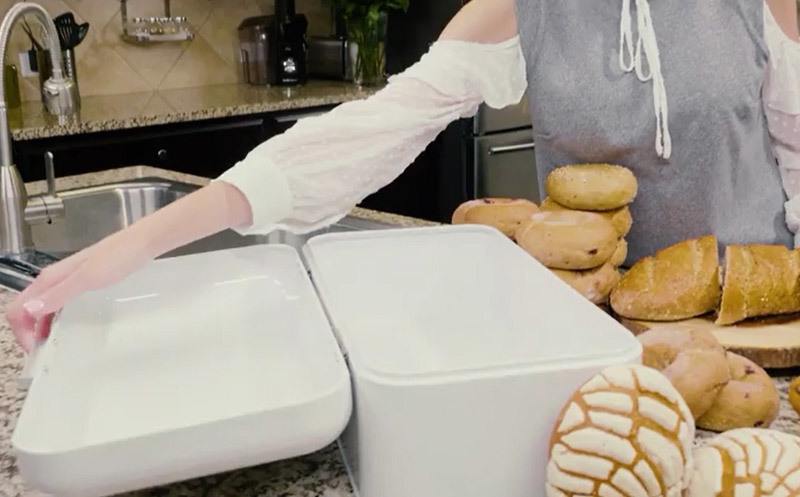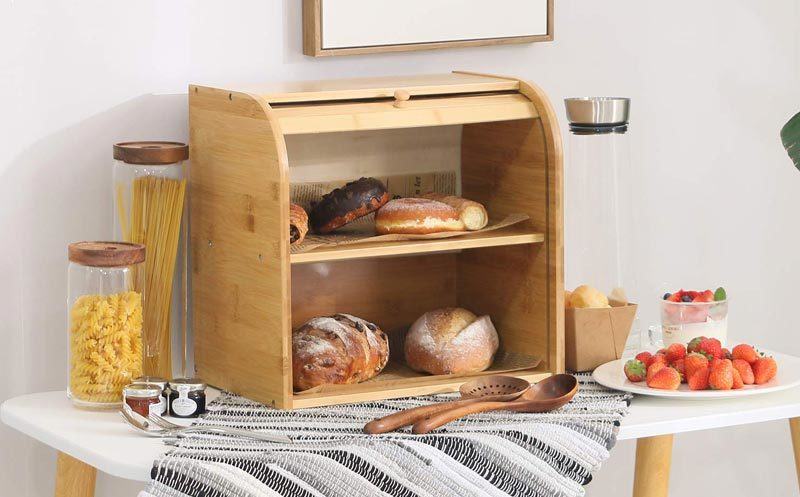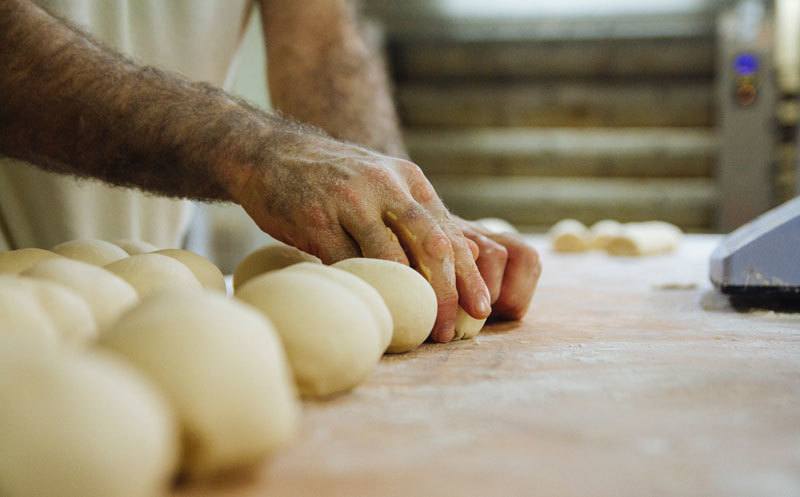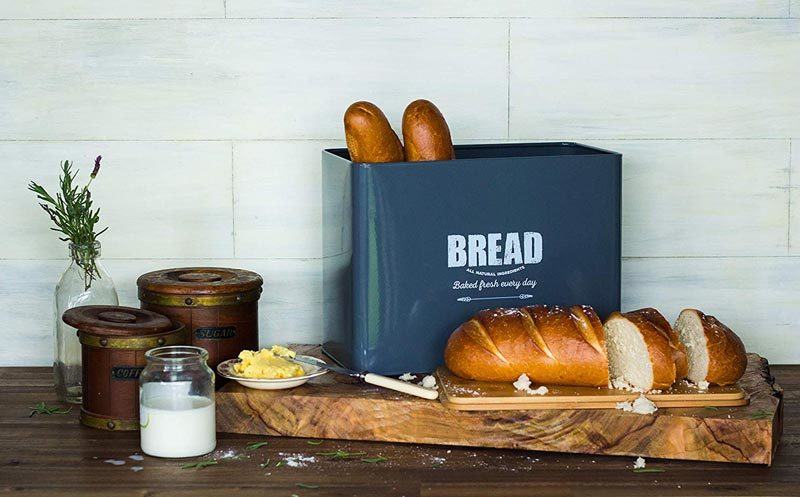
As a society, we’re so used to pre-sliced commercial bread with superficial minerals and vitamins that we’ve forgotten what a good loaf of bread can do to our sandwiches or when added to our dinners.
When we purchase loaves of bread full of preservatives, we don’t have to worry about storage because they last longer than homemade loaves. However, whether you bake at home or have a bakery, we bakers haven’t forgotten about how delicious a good homemade loaf of bread is.
If you’re a newbie homemade bread baker, you might be wondering about storing homemade bread and its shelf life.
So, we’ve created this ultimate guide on how to store homemade bread.
Storing Homemade White and Wheat Bread
How you store homemade bread depend on whether it’s baked or unbaked.
Storing Baked Homemade White and Wheat Bread

OUR RATING
There are several good methods for storing traditional homemade bread. These loaves of bread grow mold or become stale pretty quickly so it’s important to know the best ways to store them.
If you don’t have a bread box, you can use saran wrap or a Ziploc bag. Plastic bags trap the air and moisture from the bread inside which keeps your loaf of homemade bread super soft and you don’t have to worry about it going stale right away.
Make sure you keep it at room temperature while storing it in plastic.
Of course, if it stays in the bag for too long, it can start to grow mold. Not to mention it gets very icky and soggy if left in the plastic bag for too long. So, this should only be a temporary storage option for a few days.
If you plan on having the homemade bread around longer than a few days, freezing it is the best solution.
Before freezing, the bread should be completely cooled down from baking. You don’t want to freeze hot bread.
Once your bread is cool, wrap it in aluminum foil and then place the loaf of bread in a Ziploc bag or wrap it tightly in saran wrap. If you choose the Ziploc bag option, make sure there’s no air in the bag before closing it up.
You can also store sliced homemade bread, too. Just place it in a Ziploc bag without any excess air. It’s much easier thawing out a few slices of bread versus thawing an entire loaf.
Storing Unbaked Homemade White and Wheat Bread
If you’re not ready to bake your homemade bread just yet, you can always just freeze the bread dough and bake it later.
Once your bread dough is finished and shaped, wrap it in saran wrap on the greased baking sheet or greased pan you’re going to use to bake it later. Then it’s ready to throw in the freezer.
Storing Homemade Sourdough and Artisanal Bread
Again, storage depends on whether or not you want to store baked bread or bread dough.
Storing Baked Homemade Sourdough and Artisanal Bread
OUR RATING
Sourdough and artisanal bread are great in that they don’t go stale or moldy as quickly as other types of fresh and homemade bread.
There are good bacteria in sourdough starter called lactobacilli. This good bacteria is what produces the lactic acid in sourdough bread, known for its sour taste and distinctive smell.
This good bacteria creates a few different anti-fungal fatty acids. There’s such a high number of this anti-fungal fatty acids, that it prevents sourdough bread from molding.
Because of this delay in mold growth, sourdough bread can be left out for a few days before you have to worry. Plus, letting the bread sit out helps create that crusty sourdough that we’ve all come to know and love.
Keep in mind, if you’ve already cut into your loaf of bread, you can still leave the sourdough bread out for a few days but make sure to cover the open side so it won’t go stale on the inside.
After a few days, if you don’t have a bread box, you should store your sourdough bread in a closed bag. This will keep the moisture in, preventing the bread from going hard and stale.
For longer storage, consider freezing your bread until you’ll ready to dig in.
Always make sure your bread is cooled down before you freeze it, just like with traditional bread. Once it’s cooled down you can wrap it in aluminum foil and place it in a Ziploc bag.
You can also slice the loaf of homemade sourdough bread before freezing if you want. You’ll still have to freeze it in a Ziploc bag with all the air pushed out of it.
Storing Unbaked Homemade Sourdough and artisanal Bread

If you’ve got your homemade sourdough dough already made but you aren’t ready to bake it, you can freeze just like you freeze traditional homemade bread.
When the dough is ready, grease the baking sheet or pan that you are going to bake it in. Place the dough onto or into the pan and saran wrap it tightly.
Thawing Frozen Homemade Bread
There is a method of thawing homemade loaves of bread to keep it tasting delicious. If you just let it thaw, it can take hours or end up soggy. It can even go stale from just thawing it at room temperature.
If you want it to taste like it was just baked here are a few steps to take.
- 1First, preheat your oven to 350 degrees.
- 2Once your oven is temperature ready, place on the center rack in the oven.
- 3Let it sit in the oven for 20 to 30 minutes.
If you’re only thawing slices of bread, you can microwave them until they’re fully thawed.
The Bottom Line
Storing bread doesn’t have to be a puzzle. It’s easy to do but if you want your bread to stay fresh and taste delicious, you need to take the proper steps.


